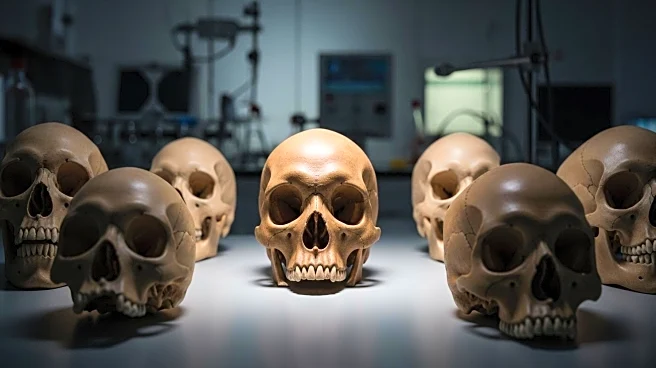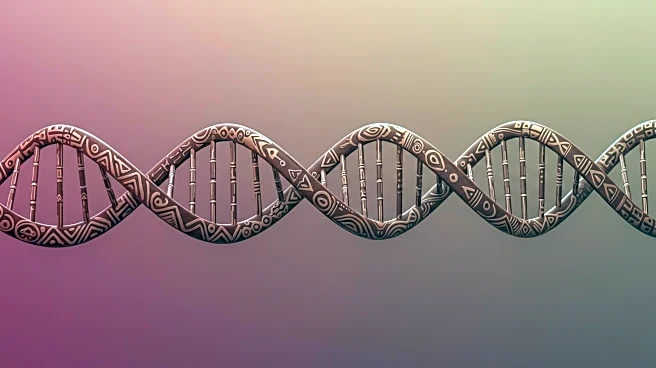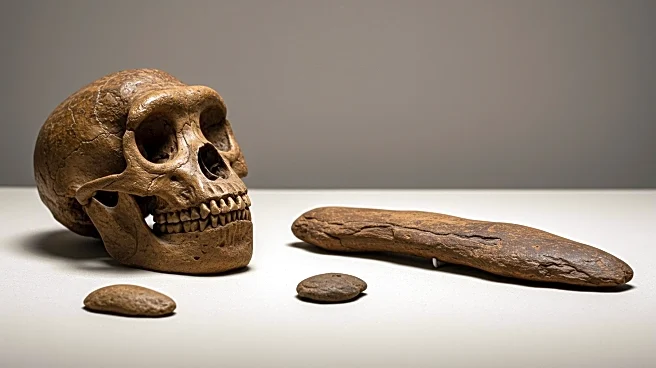What is the story about?
What's Happening?
Israeli researchers have identified skulls belonging to the Denisovans, an enigmatic human species, and possibly an unknown species. The Denisovans were first discovered in 2010 through DNA analysis of a finger bone found in Siberia. Recent studies have identified three skulls that match Denisovan characteristics, including the Harbin skull, previously classified as Homo longi. The research, published in PNAS, suggests that Denisovans had distinct physical traits, such as large teeth and squat bodies. The study also explores the possibility of other unknown human species, highlighting the complexity of human evolution.
Why It's Important?
This discovery provides significant insights into human evolution, offering a clearer picture of the Denisovans' physical appearance and their evolutionary relationship with Neanderthals and modern humans. The identification of Denisovan skulls helps fill gaps in the fossil record and enhances understanding of human diversity and migration patterns. The research also raises questions about the existence of other unknown human species, challenging traditional views of linear human evolution and suggesting a more complex evolutionary history.
Beyond the Headlines
The findings have broader implications for understanding human ancestry and the genetic diversity of ancient populations. The study of Denisovan DNA could reveal new information about human adaptation and survival in different environments. Additionally, the research highlights the potential for discovering more unknown species, which could reshape current theories of human evolution and migration.
AI Generated Content
Do you find this article useful?











